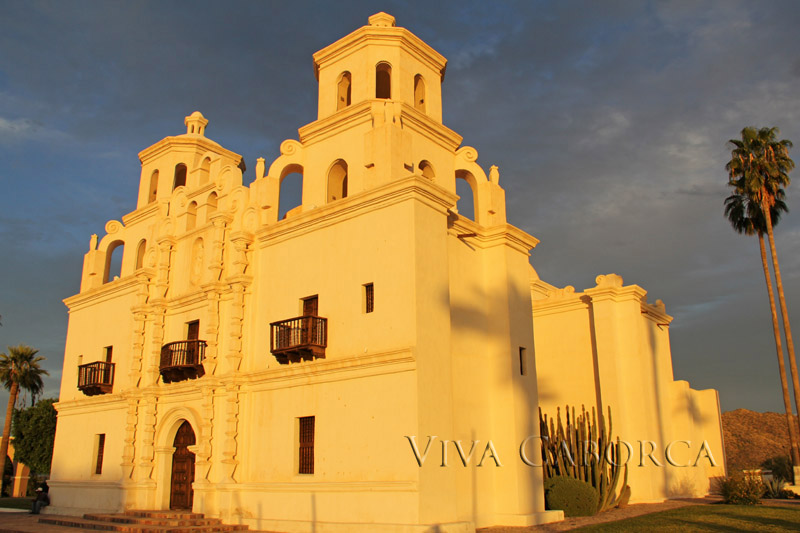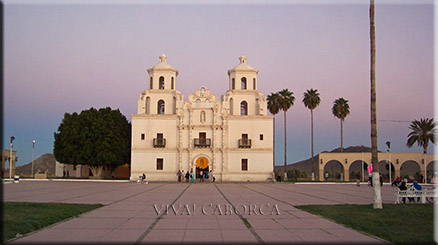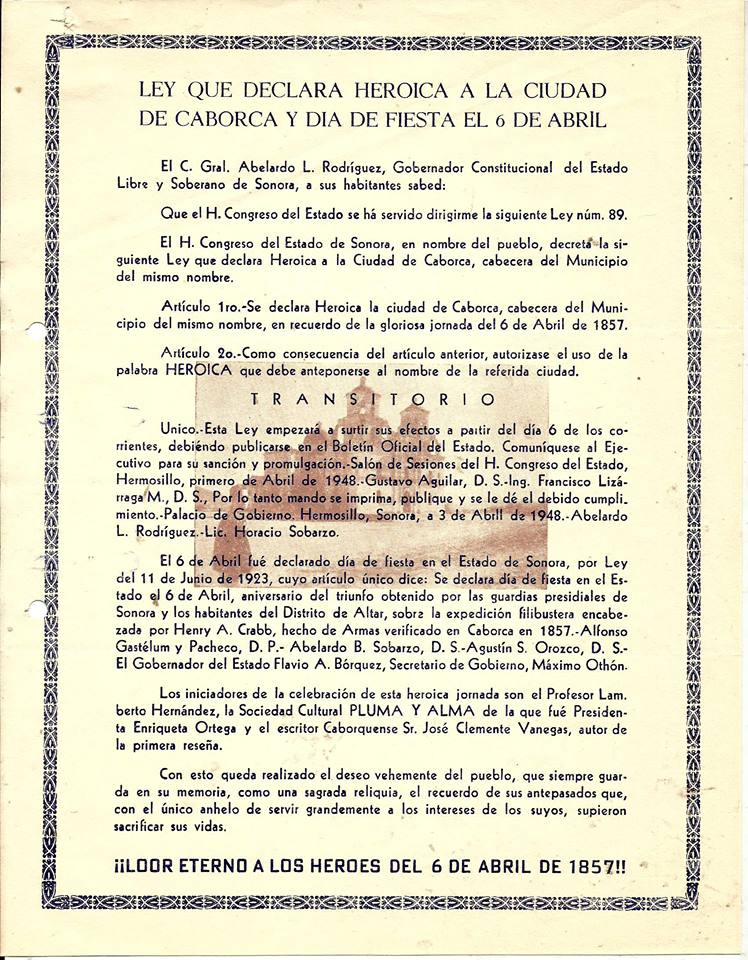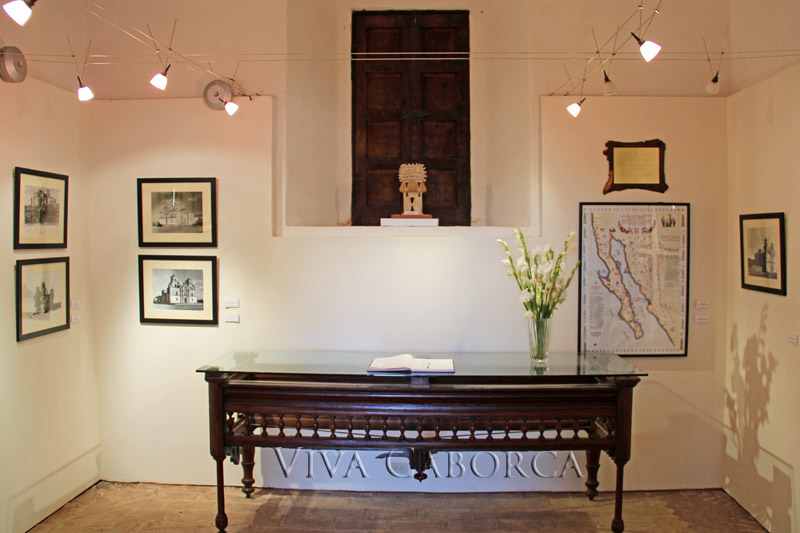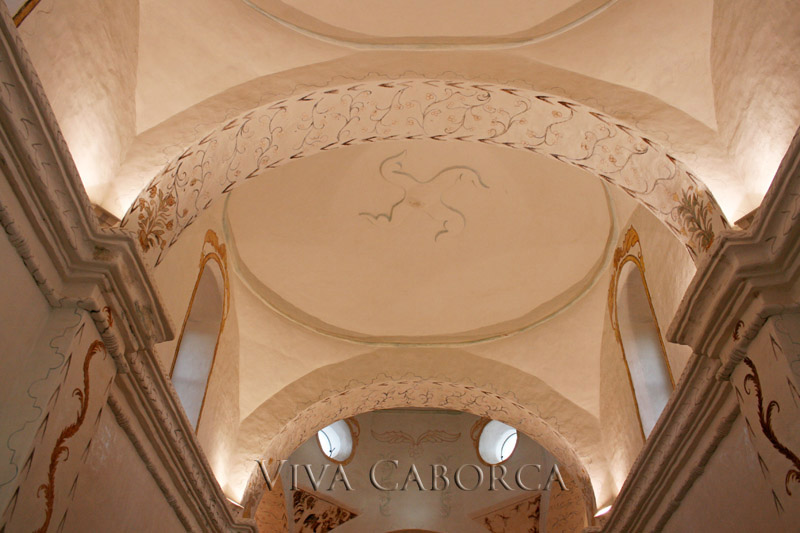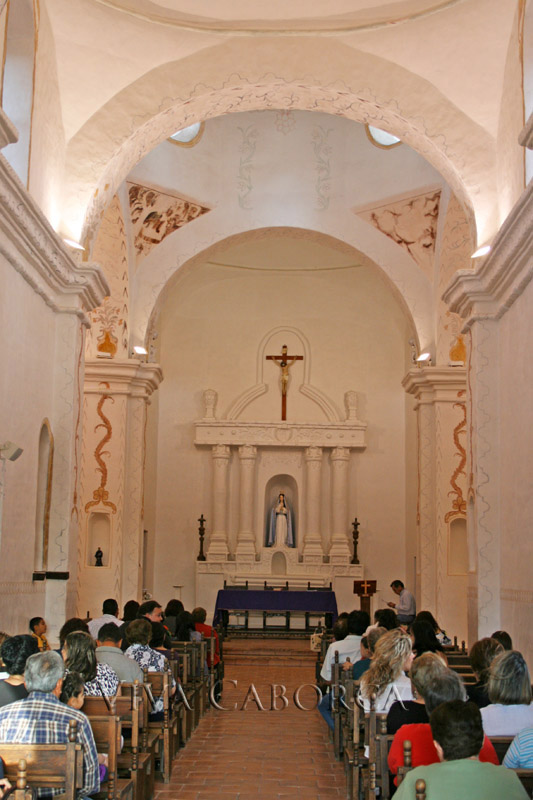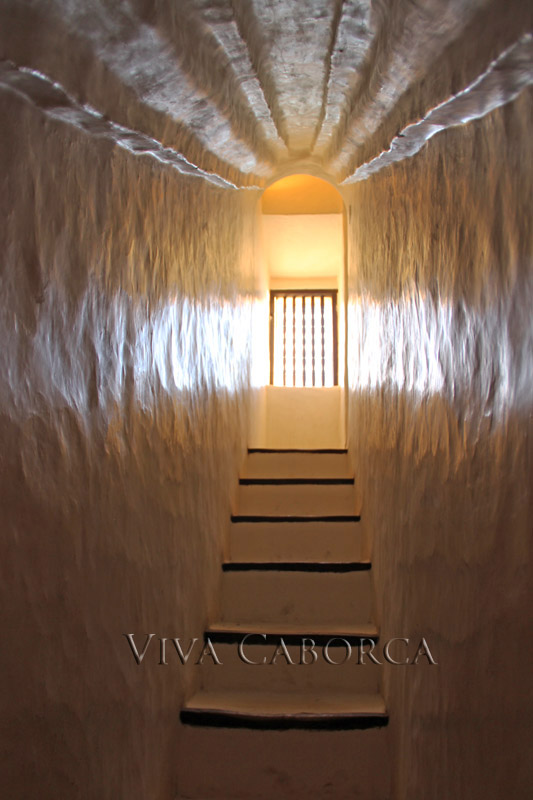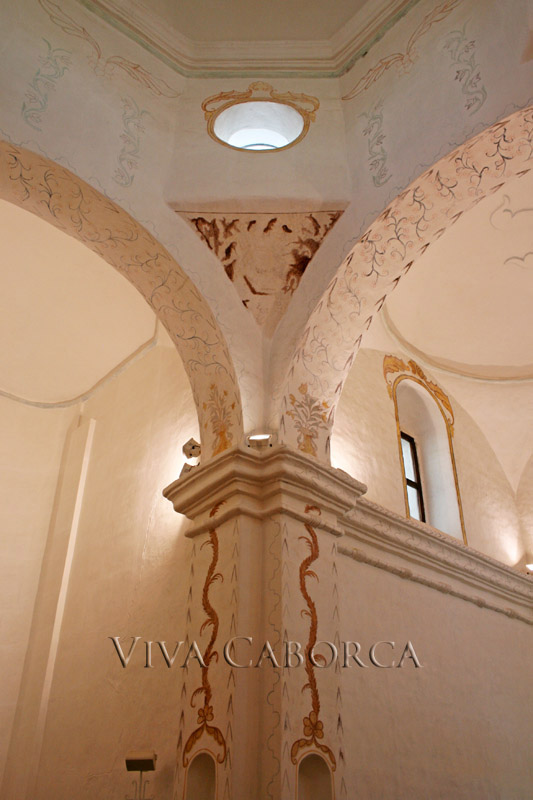The Templo Historico
La Purísima Concepción de Nuestra Señora de CaborcaMission Church at Pueblo Viejo in Caborca
La Purísima Concepción de Nuestra Señora de Caborca
Pueblo Viejo, or “old town” is one of the original inhabited areas of Caborca. Located at the southern area of the city, this often-visited part of the city has many sights for visitors to see.
The centerpiece of Pueblo Viejo is the Franciscan mission church La Purísima Concepción de Nuestra Señora de Caborca. Also known locally as the “Templo Historico,” (historic temple), the Franciscan mission church sits along the Rio Concepción, a little more than a mile to the south of downtown Caborca.
The church is often used as a symbol of Caborca and a source of civic pride, and it is a popular site for visitors to the town. Designed by Spanish architect and mason Ignacio Gaona, the church (also known as the Templo Historico (historic temple)) has a storied history that includes the murders of priests, its use a defensive location against an armed incursion, and severe flood damage.
La Purísima Concepción de Nuestra Señora de Caborca was originally completed in 1693. The mission did not have a peaceful start though, as the church’s first priest, Padre Francisco Xavier Saeta, was killed by local residents in 1695, who also burned the church. Another of the misson’s priests, Father Tomas Tello, was also killed 56 years later in 1751, during the Pima Rebellion.
And because of its location beside what is usually a dry riverbed, large portions of the church were washed away in 1915 when the Rio Concepción flooded, taking away one side of the temple along with the back of its sanctuary.
But the historic temple is perhaps best known for the event that put the “heroic” in Heroica Caborca, an April 1857 armed incursion into Caborca by Californian Henry Crabb and his band of mercenaries. The local residents of Caborca defended the town from inside of the church until elements from the Mexican Army arrived days later. Crabb and his soldiers agreed to a surrender, under the terms that their lives would be spared and their wounded would be treated, but as soon as they surrendered they were all executed.
In 1948 the Mexican government declared Caborca to be “Heroic Caborca,” in recognition of the actions of its citizens during the siege. The event is celebrated every year with fiestas in Caborca, which culminate on the day that the conflict ended – April 6.
A restoration of the church funded by the Mexican government was undertaken in 1957, and early in this century a local group of Caborca citizens sponsored a dramatic restoration of their beloved church, which included re-plastering of the church’s exterior and an extensive and painstaking restoration of the temple’s interior, which included the establishment of a small museum in the north-side convent wing of the church.
A local group also sponsored the establishment of a botanical garden adjacent to the temple, which is a beautiful place to relax and take photos while enjoying the native desert plants and views of the beautiful mission church.

